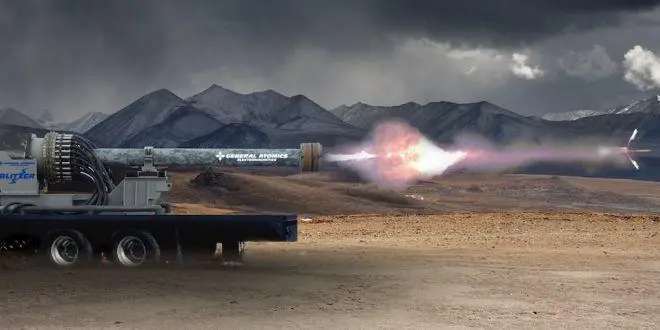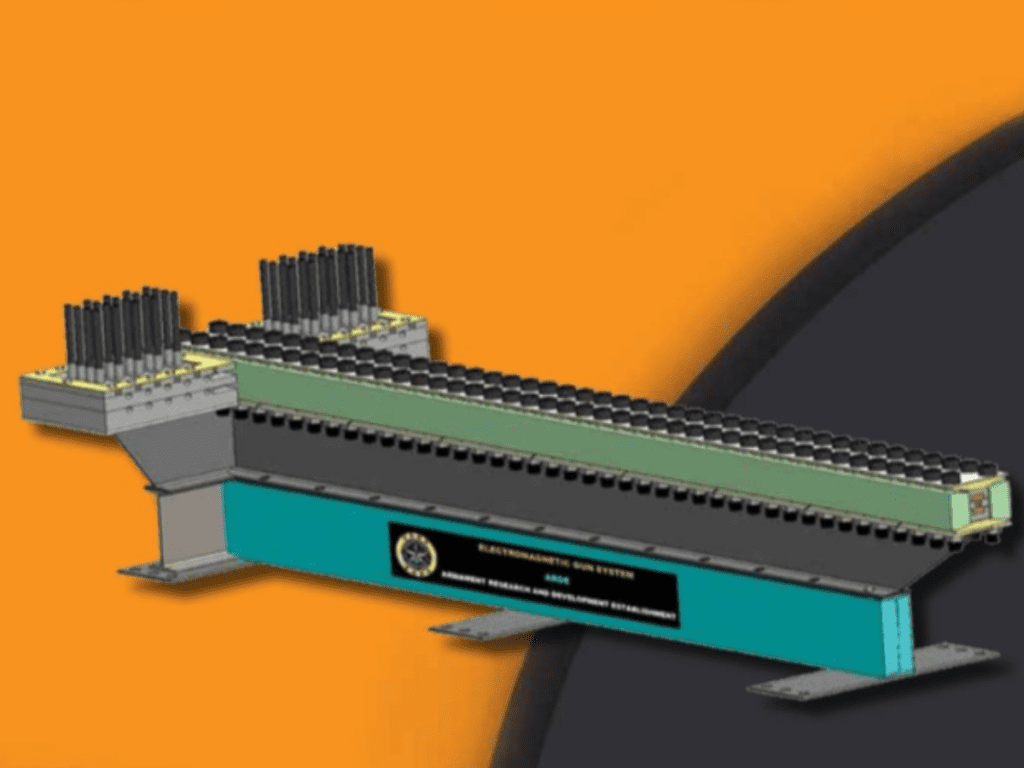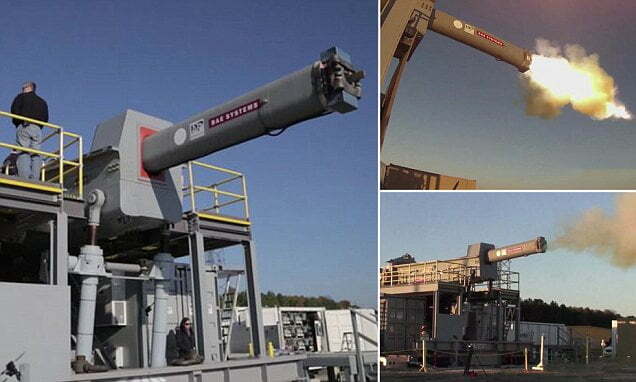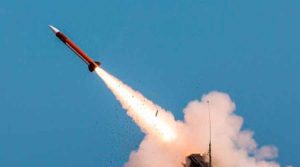DRDO making Electromagnetic Railgun
The Defence Research and Development Organisation (DRDO) in India is currently working on the development of an electromagnetic railgun. An electromagnetic railgun is a type of weapon that uses electromagnetic force to launch a projectile at high speeds. It has a number of potential military applications, including the ability to launch projectiles at long ranges with high accuracy, and the potential to cause significant damage to targets. However, the technology is still in the early stages of development and it is not yet clear when such a weapon will be fully operational.

An electromagnetic railgun is a type of artillery that uses electromagnetic force to launch projectiles at high speeds, rather than traditional chemical propellants. The projectile is accelerated along a set of parallel conductive rails, using a massive electrical current to generate a magnetic field. This field propels the projectile out of the barrel at high speeds, typically several times faster than traditional gunpowder-based weapons.
One of the key advantages of an electromagnetic railgun is its potential to launch projectiles at much longer ranges than traditional artillery. It also has the potential to cause significant damage to targets due to the high kinetic energy of the projectile. Additionally, an electromagnetic railgun has the potential to be more precise and accurate than traditional artillery.
However, the technology is still in the early stages of development and there are a number of technical challenges that must be overcome before it can be deployed in a military setting. These include the need for a reliable and powerful power source, the development of suitable projectiles, and the ability to withstand the high stresses and temperatures generated during firing.
As of now, the DRDO is working on the development of the technology and it is not clear when the weapon will be fully operational. The railgun is expected to be used on ships, as well as on land-based platforms, for long-range engagements and deep strike capabilities.
An electromagnetic railgun is made up of several key components, which include:
- The rails: These are two parallel metal conductors that run the length of the barrel. The rails are used to guide and accelerate the projectile as it is fired.
- The projectile: This is the object that is launched from the railgun. It is typically made of a conductive material, such as copper, and is designed to withstand the high speeds and forces generated during firing.
- The power source: This is typically a large capacitor bank that stores electrical energy. When the railgun is fired, the stored energy is rapidly released, creating an intense electrical current that flows through the rails.
- The armature: This is a metal ring that surrounds the projectile and completes the electrical circuit between the rails. It is typically made of a conductive material, such as copper.
- The barrel: This is the tube that contains the rails and the projectile. It is typically made of a strong, heat-resistant material, such as steel or titanium.
When the railgun is fired, a large electrical current flows through the rails, creating a powerful magnetic field. This field propels the projectile out of the barrel at high speeds. As the projectile moves along the rails, it is continually accelerated by the magnetic field, reaching its maximum speed just before it exits the barrel.
Additionally, the railgun system consists of a control system that monitors the performance of the railgun and a fire control system that allows for the adjustment of the aim and the firing of the projectile.

In addition to the components I mentioned earlier, an electromagnetic railgun system also includes a number of other elements to ensure proper operation and safety.
- The cooling system: The high electrical currents flowing through the rails and the projectile generate significant heat, which can damage the system if not properly dissipated. A cooling system, such as a water or gas-based system, is typically used to remove heat from the rails and other components.
- The insulation: The electrical current flowing through the rails generates a high voltage, which can cause arcing between the rails and other components if not properly insulated. Insulation materials, such as ceramic or plastic, are typically used to prevent arcing and protect the system from damage.
- The launch control system: This system ensures that the projectile is launched at the correct time and with the correct parameters. It typically includes sensors and control elements to monitor the system’s performance and adjust the launch parameters as necessary.
- The projectile guidance and control system: This system allows the projectile to be guided and controlled in flight. This can include systems such as fins, rudders, or wings, which allow the projectile to be guided to its target.
- Safety systems: This can include systems such as emergency shut-off valves, fire suppression systems, and pressure relief valves to ensure the safety of the operators and equipment in case of an accident.
- Overall, the electromagnetic railgun is a complex system that requires precise control and management of the electrical and mechanical components. The system also requires high power supply, as the electrical energy required to launch a projectile is significant. The technology is still under development and many challenges are yet to be overcome before it can be fully operational in a military setting.



